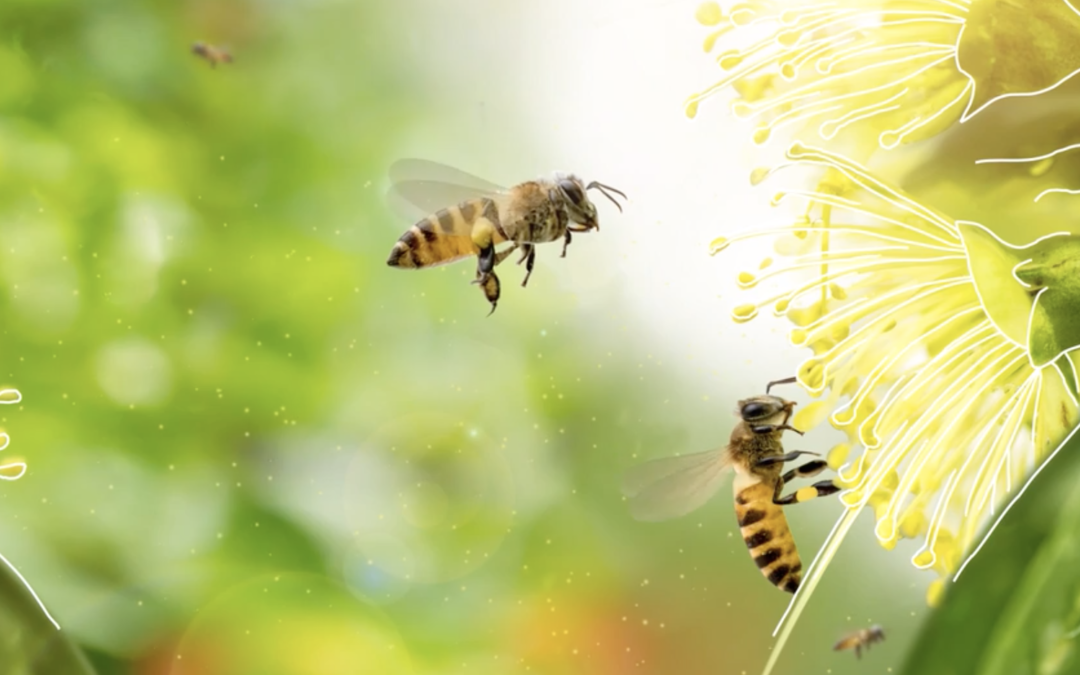Article from Walmart
We really need insects. Especially those that pollinate. At Walmart, we’ve changed our approach to pollinators — even the ones that sometimes end up in our stores.
Our ongoing commitment to promote pollinator health has led us to try new things. Last April, Walmart embarked on the largest pollinator protection effort from a U.S. grocery retailer to date, designing specific commitments to help reduce nature loss, promote integrated pest management, expand pollinator habitats and label pollinator-friendly plants in our stores. But we didn’t stop there: We’re taking action at several levels.
At stores around the country, bees have made their homes in places as diverse as soffits and garden center shelving. Instead of exterminating them, our associates flag the colony, and whenever possible, work with an accredited wildlife vendor to humanely remove and relocate the bees — often placing them with a local beekeeper who can help ensure the colony continues doing what nature designed it to do: pollinate things.
To better understand why we’re so invested in the future of pollinators, we’ll begin with a big question: Why are pollinators worth protecting, even the bees who sometimes make temporary homes in Walmart stores and Sam’s Clubs?
There are around 200,000 different species that act as pollinators, which means they carry pollen from the male part of the flower to the female part of the same or another flower. Whether it’s a honeybee, a squash bee or native wild pollinators, which can take forms as diverse as butterflies and beetles — they share something important: The simple genetic exchange they’re responsible for helps to grow much of our food.
Our policy and overarching efforts are designed to promote all pollinators, but there is a reason we’ve doubled down on bees. Honeybees in particular are America’s primary commercial pollinator, and they play a pivotal role in our supply chain.
These pollinators are prolific, and that’s why we’re educating our associates and customers on what’s really happening when they ‘see the bee.’ It’s not only our corporate strategy marching us toward a greener world — it’s also our frontline store associates, who can turn small actions into big change by understanding more about why bees behave the way they do. And what they can do to protect them.
“Since April 2021, Walmart has realigned its pest management processes to work with local bee relocation experts across the country, humanely removing and relocating bees from our stores and fulfillment centers, and placing them back into nature.“
Waite Colbaugh
Walmart Pest Management
During the summer, bee colonies may house as many as 30,000 to 80,000 worker bees alone. When the hive gets too big, the bees there will produce a new queen, and half the hive will set out in search of a new home. This is called swarming, and despite the intimidating name, it’s actually one of bees’ most vulnerable moments.
With new processes in place across our stores, Walmart treats swarms differently. During a swarm, associates are taught to simply tape off the area until the swarm moves on to its forever home. More than half of our pollinator protection efforts in stores and clubs over the last year have come through learning how to humanely interact with swarms. Or, in other words, corporate conservation can start simply: with education.
When it comes to protecting bees at our stores and clubs, small actions can go a long way. Bees are significant contributors to state economies and the growth of important produce we bring to our customers. Our bee protection and relocation efforts span several U.S. states and regions; below are just three examples of how important bees are to local economies.
Every time we work to humanely relocate bees, we become part of a cycle that helps ensure they can have a life outside our stores, and return to being productive pollinators. If you’ve ever enjoyed an almond, an apple, a cup of coffee or a cranberry, you probably understand why.
When we protect a bee colony, we’re helping stock our stores — and farms, lawns and gardens around the country — with the things that matter to you. From your favorite fruits to the flowers you pick up on the way home, we’re working to spark change for one of nature’s essential architects. Next time you see a bee, think about what it means to you. We’ll be doing the same.

